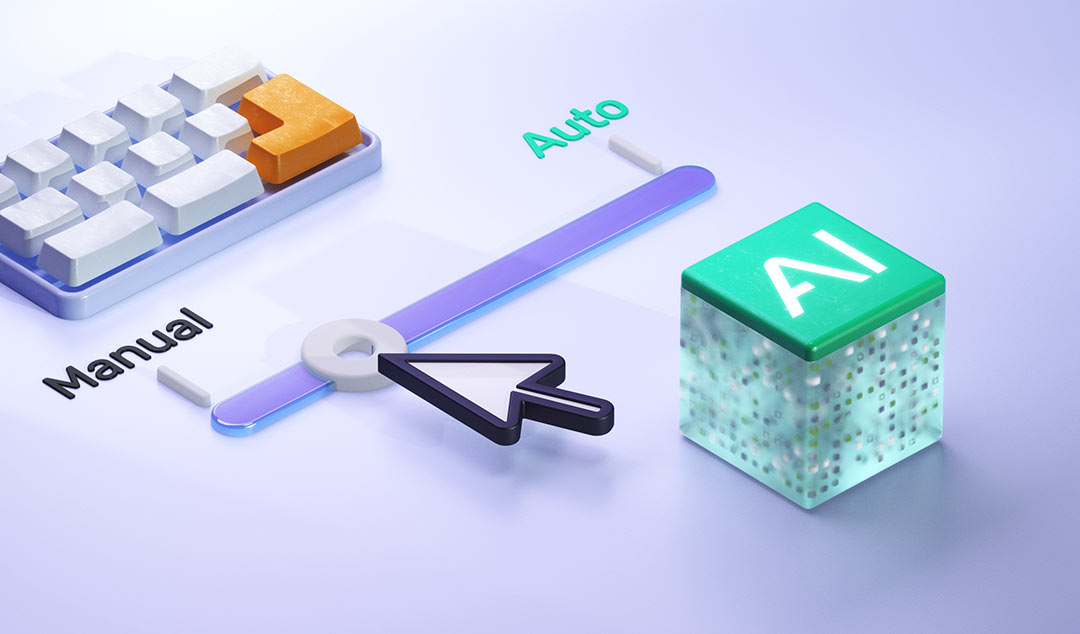TECH
QA Automation Tools and Best Practices: Leveraging AI for Test Efficiency

In today’s fast-paced software development environment, there is a big need for speedy delivery of high-quality products. This focus has led to the growth in QA automation-this backbone of ensuring applications are bug-free and working as expected. However, its evolution with new technologies, especially AI, provoked changes that brought advanced capabilities and have made this process quite efficient.
This article tries to illustrate the need for using AI in automating QA, outlines the best QA automation tools that rely on AI, and also provides the best practices for using these tools in more productive testing.
Role of QA Automation in Modern Software Development
QA automation focuses on the automation of repetitive testing tasks, wherein the teams can accelerate release without sacrificing quality. Scripts and software tools help run tests automatically, compare results, and report these issues. Automating tests, especially regression tests, enhances teams’ performance by reducing manual effort through:
- Reduction in manual effort: This is one of the significant benefits of automation, as it does not need to repeat the same test multiple times. QA teams should spend time on exploratory testing and complex test cases.
- Higher Reliability of Test: Automated tests are better than humans because they are consistent with running multiple environments and browsers.
- Better Test Coverage: The simulation of different conditions by automation tools usually yields a more extensive test coverage of various scenarios and configurations.
- Faster the CI/CD Pipeline: With the inclusion of automated tests in the CI/CD pipelines, teams begin to catch and start fixing defects much earlier in the development cycle, thereby making the release cycle shorter.
However, conventional automation frameworks have some drawbacks, such as high test maintenance, not being adaptable to tests, and complex dynamic elements that make it really challenging to handle.
This is where AI-based QA automation exists.
Leveraging AI in QA Automation: The Future of Testing
AI is transforming QA automation inculcating smart test generation, the act of maintaining it, and executing the very tests. Here’s how AI is taking QA automation to the next level:
1. Self-Healing Tests
The main issue with traditional automation testing is that it requires the scripts to be maintained, particularly when UI elements are changing at a very high speed. Self-healing capabilities in AI-driven tools help adapt the tests automatically to changes in UI, along with a reduction in the failure of tests and the efforts in maintenance. For example, if a locator like XPath/CSS selector has been changed, then AI can find alternative locators for the same and continue running the test.
2. AI-Based Test Case Generation
AI must scan the AUT, user behavior, and historical test data to generate self-generated test cases. This enhances the coverage of teams’ test cases while saving precious time, which could be spent otherwise on hand-writing test scripts.
3. Predictive Analytics for Test Optimization
AI will provide predictive analytics that can highlight those test cases as being more likely to fail, and hence QA teams can focus their efforts in these key areas. Therefore, this technology brings efficient usage of resources and saves time running tests unnecessarily.
4. Intelligent Bug Detection
AI algorithms can analyze patterns in test results, logs, and application behavior to identify bugs much faster. Machine learning models can learn from historical test outcomes, which makes it easier to pinpoint the problem areas.
5. Test Data Generation
Creating the right and diverse test data is a cumbersome process. AI can create test data that closely mirrors real scenarios; thus, it ensures better test coverage at the same time minimizing the bugs likely to occur during production.
6. Test Smarter, Not Harder
AI aids smart testing, wherein it can inspect code changes and run tests on the affected parts of the codebase. This leads to shorter test execution times and consequently reduces the speed of feedback loops.
Top QA Automation Tools Leveraging AI
Several QA automation tools use AI to make testing more efficient and flexible. Some of the most prominent tools using AI in their frameworks are listed below:
1.Kane AI
KaneAI by LambdaTest is a smart AI Test Agent that allows teams to create, debug, and evolve tests using natural language and lets you perform cross browser testing at scale. It is built from the ground up for high-speed quality engineering teams and integrates seamlessly with the rest of LambdaTest’s offerings around test execution, orchestration, and Analysis.
It is a cloud-based platform used for cross-browser testing. This assists developers in test site on mobile and over 3000 real desktops, as well as mobile browsers operating on real operating systems.
Kane AI Key Features
- Intelligent test generation – Effortless test creation and evolution through Natural Language (NLP) based instructions.
- Intelligent Test Planner – Automatically generate and automate test steps using high-level objectives.
- Multi-Language Code Export – Convert your automated tests to all major languages and frameworks.
- Sophisticated Testing capabilities – Express sophisticated conditionals and assertions in natural language.
- Smart show-me mode – Convert your action into natural language instructions to generate bulletproof tests.
2. Testim
Testim is an AI-powered codeless automation platform that provides end-to-end testing for web applications. The AI capability can identify elements dynamically and maintain tests with less manual interference.
Key Features:
- Self-healing tests adapt UI changes automatically
- AI-driven test creation and maintenance reduce test flakiness
- Native CI/CD pipelines allow continuous testing
- Cross-platform, cross-browser testing
- Best For: Agile teams seeking scalable, intelligent test automation
3. Mabl
Mabl is test automation provided by the cloud, such as AI simplification in creating tests and maintaining their lifecycle. It is excellent for all web applications, so make sure to integrate with your DevOps workflow
Important Features:
- AI-powered Test Creation and auto-healing capabilities
- Smart element locators to make your tests adapt to UI changes
- Built-in visual testing to detect UI regression
- Continuity testing along CI/CD pipelines.
- Best For: Teams looking for a cloud-based AI-based functional and visual test automation tool.
4. Applitools
Applitools uses an AI-driven test automation approach that specializes in visual UI testing. In Applitools it tries to compare screenshots of any web application on multiple browsers and devices in order to identify the visual bugs that other test automation tools may overlook.
Key Features:
- AI-based visual comparison that even identifies very small variations in the User Interface.
- Tests are self-sustaining and work to reduce unnecessary interference from the user.
- Cross-platform and cross-browser test executions.
- Smoothing integration with prevailing automation frameworks: Selenium, Cypress, WebDriverIO, and many more.
- Best for: Visual testing to determine that UIs of a particular application are rendered properly on various devices.
5. Functionize
Functionize is an AI-powered tool that automatically builds tests through machine learning from plain English commands. This makes maintenance of the tests much lower. It will also provide intelligent recommendations for improvement in test coverage.
Some Key Features:
- Creation of tests using plain English commands based on AI and machine learning.
- Self-healing of tests: The tests are able to sense the changes happening in the UI and change without human intervention.
- Predictive analytics focus on high-risk test cases.
- Cross-browser and cross-device testing
- Recommended for : Teams looking for AI-driven test automation with the creation of natural language testing
6. testRigor
testRigor is an AI-driven tool that allows testers to create automated tests using plain English commands. It is free from coding skills, so test automation can be owned by non-technical team members as well.
Main Features :
- AI-driven test creation that makes test case design easier
- Natural language commands for test scripts.
- It supports cross-browser and mobile testing.
- Self-healing tests to minimize the maintenance.
- Best For: Teams with less coding skills looking for simple test automation.
7. Katalon Studio
Katalon Studio is an all-around test automation tool that uses AI to make its testing capabilities better. It includes web, mobile, desktop, and API testing with end-to-end test automation solutions.
Key Features:
- AI-powered test generation and maintenance
- Supports multiple platforms and devices.
- Integration with CI/CD tools for continuous testing.
- Smart object detection and self-healing tests.
- Best For: Teams requiring flexible test automation tools with AI enhancements for a variety of platforms.
Best Practices for Using AI in QA Automation
While AI brings numerous advantages to the realm of quality assurance automation, it should be implemented based on the best practices to realize its full potential. Here are some best practices to leverage AI for your testing process:
1. Define Clear Objectives for AI Use
Establish clear goals before you introduce AI into your QA processes. Do you intend to generate test cases, perform test maintenance, use predictive analytics, or detect bugs? Each goal will dictate the choice of AI tools and their deployment in your workflow.
Best Practice: Start from small, well-defined use cases like self-healing tests or intelligent bug detection before scaling AI adoption across your test suite.
2. Focus on the Maintainability of the Test
Test maintenance is one of the significant issues while making tests automated: the test scripts have to change alongside the application. So, in order to tackle this one, reduce the rate of flakiness tests through AI tools and avoid frequent script updations.
Best Practice: Choose AI-based tools that have good self-healing properties to adapt to changing UI. That way, your QA team focuses more on new test cases rather than old ones and doesn’t drop their productivity.
3. Test Prioritization through Predictive Analytics
Running all your tests on every code change might take you too much time and effort. Leverage AI to prioritize tests based on historical data and the likelihood of failure; this way, you will catch important bugs without running useless tests.
Best Practice: Use AI for predictive analytics in testing to optimize resources and focus on the most impactful test scenarios.
4. Combine AI with CI/CD Pipelines
In order to test fast and deliver quality software quickly, continuous testing has to be ensured. Make sure that all AI-based tests are integrated into the CI/CD pipeline so that they can run automatically each time code is committed.
Best Practice: Tools that integrate well with CI/CD platforms such as Jenkins, GitLab, or CircleCI have to be used for continuous AI-based testing starting from the development lifecycle.
5. Monitor AI Decisions and Fine-Tune Algorithms
Although AI is truly efficient for test process automation, it is not perfect. Monitor the decisions rendered by algorithms in AI, such as test cases or locators that can self-heal against your expectations.
Recommended Practice: Review the outcomes of the AI-driven test from time to time and readjust some parameters, retune models, or refine algorithms for increased accuracy.
6. AI and Human Control
AI can accelerate testing, but it should not replace the role of human oversight. More complex exploratory testing or critical choices still require human judgment. Make sure that your testing strikes a balance between automated AI-driven testing and exploratory, manual testing.
Best Practice: Utilize AI-driven automation with manual testing for all the high-risk areas and particularly along all the critical paths like user experience.
Conclusion
AI is changing the approach of test automation adopted by QA teams more intelligently and efficiently regarding the creation, maintenance, or execution of tests. This is done using AI-based tools such as Testim, Mabl, Applitools, Functionalize, testRigor, and Katalon Studio to minimize test flakiness, optimize coverage, and ensure that tests run more efficiently overall.
Realizing focus on test maintenance, prioritization of tests through predictive analytics, and infusion of AI in CI/CD pipelines would ensure that teams could get the most out of AI. While AI optimizes automation, a balance between AI-driven testing and human oversight will lead to high-quality, bug-free applications.
As AI embraces QA automation, organizations can begin to accelerate their delivery with consistently high quality, and align themselves for success within the competitive landscape of software.
Keep an eye for more latest news & updates on TRK!











